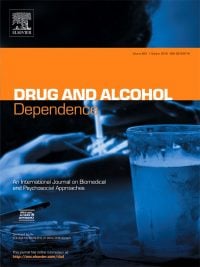COMMENTS: YBOP has been claiming for years that a large percentage of today’s porn addicts are dissimilar from other types of addicts – including traditional sex addicts. Many of today’s porn users progress to porn addiction because they started using digital porn at a young age, eventually got hooked, and often conditioned their arousal to everything associated with their porn use. In other word, their compulsive porn use was NOT the result of trauma or pre-existing conditions (OCD, depression, ADHD, anxiety, bipolar disorder, etc.).
This new study lends support to YBOP’s assertion. It compared drug addicts, alcoholics, gambling addicts, CSB subjects (porn/sex addicts), and controls. Only 14% of CSB subjects had comorbidities (far less than other types of addictions), AND the “negative life events” for CSB subjects were the same as for controls. Excerpt:
All participants with an addiction passed the cut-off score of their addiction assessment (Drugs: M = 22.19, SD = 0.52; Alcohol: M = 31.76, SD = 1.5; Gambling: M = 15.04, SD = 0.56; Sex: M = 135.59, SD = 2.39). Comorbidity rates were highest in DUD (50%), followed by AUD (38%), GD (23%), and CSB (14%). There were no differences between addiction groups in withdrawal time or overall number of years the individual suffered from his/her addiction.
Conversely, the age at which the addiction first started for each participant varied significantly across groups (Welch’s F(3,79.576) = 20.039, p < 0.001). CSB started at the earliest age (M = 12, SD = 4.8), followed by DUD (M = 15, SD = 3.9), with AUD and GD both starting at a similar older age (M = 23, SD = 10.4 and M = 23.5, SD = 13, respectively).
Communication with authors concerning age of CSB subjects:
Of the CSB group 24 participants were between the ages of 18-29, 30 participants were between the ages of 30-44, and 2 participants were between the ages of 45-64.
——————————————————————————————————————————–
Noam Zilberman, Gal Yadid, Yaniv Efrati, Yuri Rassovsky,
Drug and Alcohol Dependence, 2019, 107562,
ISSN 0376-8716,
https://doi.org/10.1016/j.drugalcdep.2019.107562.
Highlights
- Addicted individuals experience more negative and positive life events than controls.
- Addicted individuals are more influenced by their negative experiences than controls.
- There are differences in number and influence of life events across addiction types.
- Drugs, alcohol, and gambling addictions experience more negative than positive events.
- Non-addicted individuals place greater value on their positive vs. negative events.
Abstract
Background
Research has shown that negative life events (LEs) may be connected to the development and maintenance of addictions. However, few studies have examined the potential relationship between positive events and addictive disorders, and even fewer studies evaluated the subjective perception of LEs that may underlie these relationships. Importantly, addictive disorders include both substance-related and behavioral addictions, but the relative relationship of each type of addiction with LEs remains unclear.
Methods
The present study compared 212 participants suffering from an addiction (drugs, alcohol, gambling, and sex) and 79 controls on self-report measures of negative and positive LEs.
Results
Compared with controls, individuals with an addiction reported experiencing a larger number of both negative and positive LEs and also tended to be more influenced by negative LEs. Findings also demonstrated differential patterns across addiction types, such that participants with compulsive sexual behavior (CSB) reported experiencing less negative events than those with drug use disorders (DUD) and were less influenced by these events than participants with alcohol use disorder (AUD). Finally, analyses within each group further revealed differences in the way each group experienced negative compared to positive events. Controls and participants with CSB reported experiencing a similar number of positive and negative events, whereas participants with DUD, AUD, and gambling disorder reported more negative events in their lives.
Conclusions
These findings suggest a unique profile among different types of addictions, which should be taken into account when planning personalized prevention and intervention approaches.
Keywords Addiction, Behavioral Addiction, Life Event, Personality, Stress
